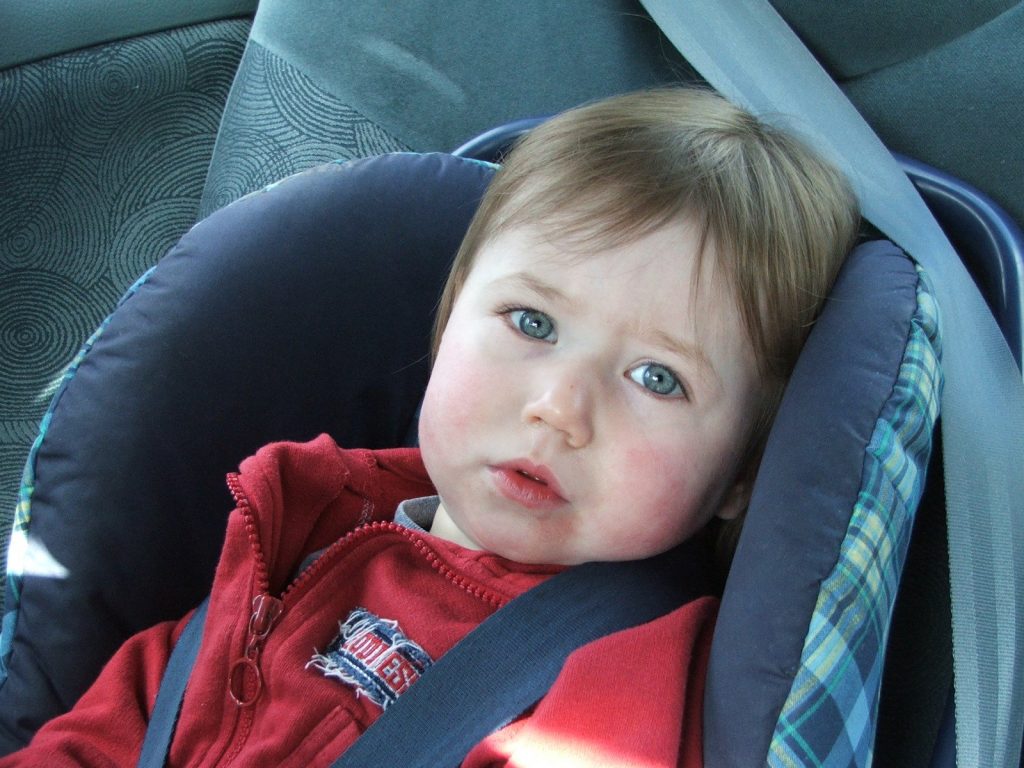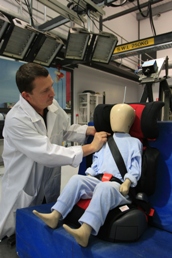THERE APPEARS TO BE an ongoing issue with child car seats not being properly installed and this, not surprisingly, puts children at greater risk of injury, or worse, in a collision.
According to a leading safety expert, Dr Stuart Newstead of Monash University’s Accident Research Centre, surveys reveal that more than 70 percent of car seats were incorrectly fitted.
This is a problem for parents, obviously, but perhaps even more of an issue for people who only occasionally carry children and find themselves having to fit and remove child car seats on a regular basis. And that means, particularly, grandparents.
The approval of ISOfix seat fittings should have reduced the incidence of incorrectly fitted child seats since ISOfix seats are much easier to install and remove. However, some child car seats are quite complicated to fit, and having to lean into the rear seat of a vehicle exacerbates the problem for older drivers who are less supple.
A Victoria Police operation in early September checked 108 child car seats and found only six had been correctly installed.

Some didn’t have the harnesses adjusted correctly into the seatbelt. Some were installed with no anchors to the correct point or, even worse, no anchors at all. Some seats were installed with seat belts going to the wrong path or not going through the restraint at all. Any of these common fitting mistakes would make a child car seat ineffective and hugely increase the risk to the young occupant/s.
ISOfix simplifies the operation considerably, but Australia was notably tardy in approving the system. ISOfix fittings are an integral part of the car’s construction, allowing child car seats to be latched solidly onto the car’s chassis. The problem is that cars more than 10 years old (remembering that Australia has many tens of thousands of older cars still being used daily) are not compatible with ISOfix. Compounding the problem is that the number of child seats compatible with ISOfix is still quite limited and these seats are more expensive (one of the reasons is that the Australian authorities specified a top tether requirement, something that was found unnecessary overseas, so Australian ISOfix child seats have to be specifically modified for our market; not all manufacturers have deemed it worthwhile and so don’t sell their products locally).
Retrofitting ISOfix to older cars is simply not economically viable – the fittings have to be welded into place.
If a child is not properly restrained, the child may become free of the seat, or be thrown around while still in the seat, hitting things inside the car at great speed. Footage of the impact and trauma of a child being thrown around inside a vehicle in a collision is truly horrifying.
There has also been a call for current national laws allowing children aged from seven not to require a child car seat to be updated.
Current thinking is that children should continue to use booster-style restraints until they reach 145cm. Most children won’t be that tall until they are 10 or 12 years of age. The problem for these children is that seat belts designed to restrain adults are not properly effective for them.

What child seats are recommended?
Fortunately, professional advice is readily available for concerned parents, grandparents and anybody who regularly (or even occasionally) has to carry the most valuable cargo of all.
The Child Restraint Evaluation Program (with the unfortunate acronym CREP) is a national initiative that independently tests cars seats. https://www.childcarseats.com.au/find-and-compare-child-car-seats
Their latest data shows results from testing 202 car seats for children of all ages (0 to six months, 0 to 12 months, one to four years and four years and above) and all types of seats (rear facing, forward facing and booster seats). One of their important observations is that child seats rated under the 2012 system cannot be compared to those tested under the 2018 system.
CREP gives the Nuna Pipa Klik (tested in ISOfix mode) the highest rating of five stars for babies up to six months. The Maxi-Cosi Citi child seat, by contrast, scores just 1.9 stars out of a possible five.
It is vital to buy a child seat appropriate to the child’s height, size and weight to ensure they are safely secured. Naturally, as children grow, this becomes an ongoing expense but is unavoidable if you are to provide maximum protection.
Buying over the internet is also not recommended, since these seats may not meet Australian Standards. Impatient with the ongoing delay in approving ISOfix, many people bought overseas seats (ISOfix fittings have been installed in cars sold in Australia since long before Australian authorities finally approved the system) but the go-it-alone decision to require a top tether now means those seats (and seats still being sold overseas) do not comply.
Another problem is buying a child car seat second hand. Without knowing the history of the seat, you may inadvertently buy one that has been compromised, perhaps by having been involved in a collision already, or having been used in such a way as to compromise its integrity.
Finally, if you are in any doubt about your ability to install a child car seat, use an authorised fitter to install it for the first time for you or at least take you through the procedure. That way, you’ll know how to install it correctly in future. Each state road traffic authority can provide you with a list of authorised fitters.
For a detailed explanation of child car seat legal requirements, go to https://www.childcarseats.com.au/legal-requirements
